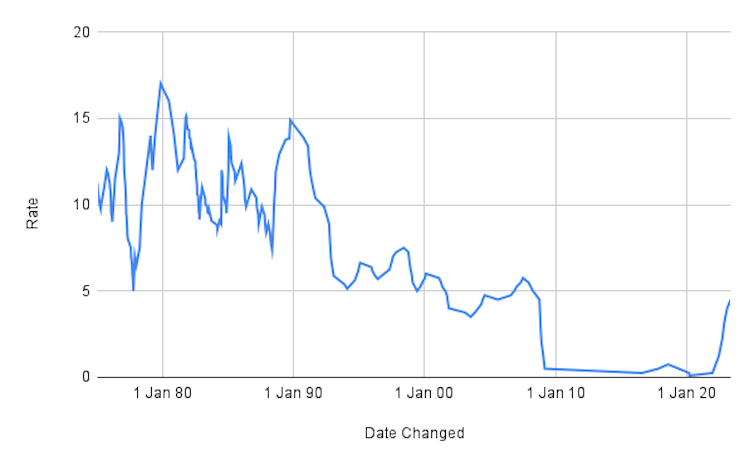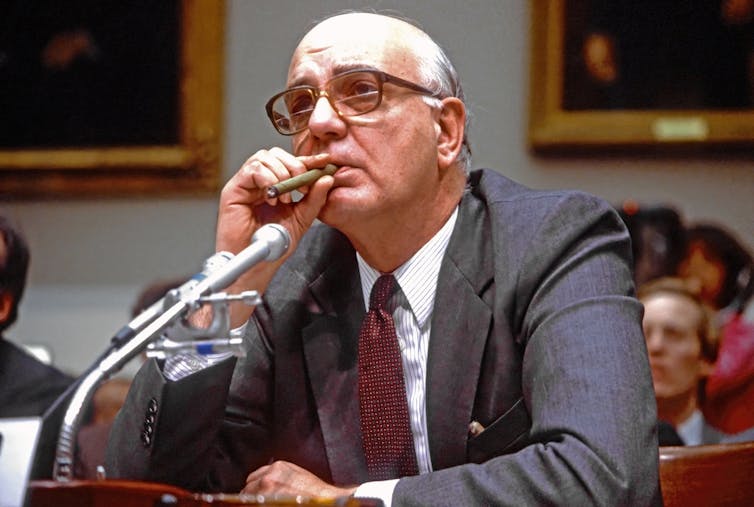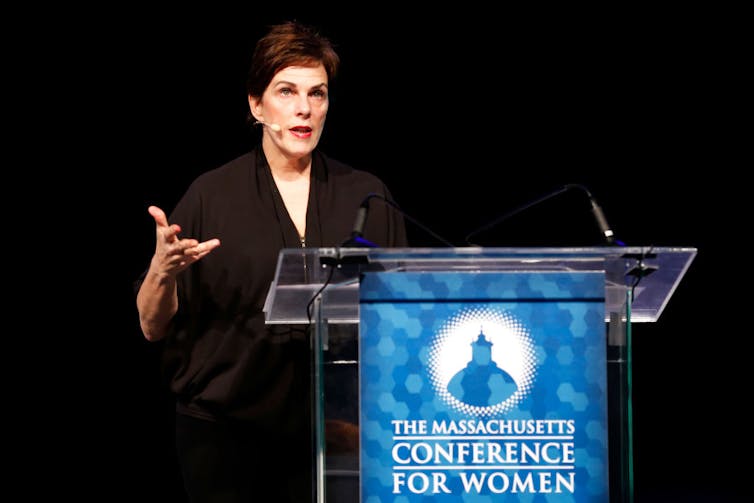The challenges and promises of climate lawsuits
Lawsuits against emissions-spewing governments and fossil fuel companies have established themselves as a key tool in the battle against climate change, but they aren’t always successful
Even the temperate, mountainous country of Switzerland isn’t immune to climate change. Sizzling heat waves are melting alpine glaciers, killing trees and fish and, in the cities, likely causing an uptick in human deaths.
Rosmarie Wydler-Wälti, who lives in Basel, is acutely aware of this. A woman in her 70s, she belongs to the demographic most vulnerable to heat-related death. To her, the government’s response to recent heat waves — cautioning seniors to stay in the shade during hot days, for instance — seemed like a Band-Aid. She wanted to see people tackling the problem’s root cause: countries like Switzerland not doing enough to curb emissions of planet-warming greenhouse gases.
With support from Greenpeace Switzerland, Wydler-Wälti and other members of a group of senior women climate activists filed a lawsuit against the Swiss government in 2016, demanding that the state curb emissions more quickly. They argued that the government, by not sticking to policies consistent with the worldwide goal of limiting warming to less than 2 degrees Celsius above pre-industrial temperatures, was threatening senior women’s fundamental human right to life. Indeed, many of the women involved ultimately reported having experienced heart palpitations, vomiting, swollen arms and legs and breathlessness during recent heat waves, and some reported having fainted.
Hundreds of lawsuits like these have been filed around the world in recent years, as activists, frustrated by the slow pace at which nations are acting to cut greenhouse gas emissions, have turned to the courts for help. The success rate has surprised many experts. Of those cases filed outside the United States — the focus of one analysis — dozens had outcomes that encouraged more aggressive climate action, according to a 2022 report from the Grantham Research Institute on Climate Change and the Environment at the London School of Economics and Political Science. In one landmark case that concluded in 2019, for example, Dutch courts ordered the government to set more ambitious climate targets.
But such cases don’t always succeed. To Wydler-Wälti’s disappointment, after a series of courts dismissed the case, the Swiss Supreme Court concluded in 2020 that the women’s rights hadn’t been violated severely enough to merit a case. “We would have to be half dead for them to believe that we’re particularly affected,” Wydler-Wälti says angrily.
Examining why some cases succeed while others don’t is key to understanding the future of this rapidly growing field of litigation. Experts say that success hinges on many factors — not only on the plaintiffs’ arguments, but also on the design of a country’s legal system, its political environment and the apparent willingness and/or ability of judges to interpret the scientific evidence around climate change.
“One of the reasons it’s so important to look closely at these cases and the impact they’re having is because their impact is likely to only grow in the years to come, as people increasingly see litigation as an important way to address the problems of climate change,” says Hari Osofsky, a human rights law expert now at Northwestern University’s Pritzker School of Law, who in 2020 coauthored an overview of climate change litigation in the Annual Review of Law and Social Science.
That said, “litigation by itself is not going to close the emissions gap,” Osofsky adds. “Solutions to climate change require a lot of different kinds of action.”
Climate change as a human rights problem
Taking governments to court over climate change was once considered a long shot, says César Rodríguez-Garavito, an international human rights and environmental law expert who heads New York University’s Climate Litigation Accelerator, which studies and advocates for climate litigation, and edited the 2022 book Litigating the Climate Emergency. Climate change is, after all, a tricky issue for courts to address.
For one thing, there’s the question of whether individual governments can be held accountable for the climate crisis when no single actor is responsible. For another, courts are typically designed to react to harms that have already been inflicted, whereas the bulk of climate-related damage will unfold in the future.
The Dutch courts’ decisions, the last of which was reached in 2019, were groundbreaking in how they handled both questions. The courts rigorously applied the latest scientific evidence on how countries’ policies contribute to climate change, concluding that the Netherlands must do its fair share regardless of what other countries do. The courts also agreed with the plaintiffs — the Urgenda Foundation, a Dutch nonprofit, and 886 Dutch citizens — that the government has a duty to reduce not only current harms of climate change to its citizens, but also future risks. The Dutch courts ordered the state to raise its existing goal of reducing emissions from 17 percent below 1990 levels by 2020 to 25 percent below.
The state complied that year, and later announced that it would greatly reduce the capacity of coal-fueled power stations, among other measures. It was a “Big Bang moment” in climate litigation in Europe, says human rights researcher Corina Heri of the University of Zürich in Switzerland. “That really changed the idea of what could be possible legally.”
The decision inspired a wave of like-minded lawsuits, some of which saw similar success. In 2021, Germany’s constitutional court decided a lawsuit brought by nine young people against the German government that claimed insufficient climate goals. The court ordered the government to set clearer emissions targets for 2031 onward. Soon after, the government passed a bill containing faster emissions reductions and announced plans to become carbon-neutral by 2045 — faster than its previous goal of reaching climate neutrality by 2050.
Like the Urgenda case, the German lawsuit invoked human rights — fundamentally arguing that the worsening hazards driven by climate change threaten the very rights to life and dignity, particularly for future generations. This is legally, as well as symbolically, a powerful argument, because many regions have specific legal pathways and courts dedicated to dealing with human rights cases, and such arguments center and individualize the suffering of people.
In recent years, the argument has gained traction in courtrooms and international law, Rodríguez-Garavito says, and on the whole, “it has been much more consequential and much more effective than any of us would have thought.” However, while such successful cases create an impetus for action, actually changing and implementing new policies is often a longer-term project, Heri notes.
For instance, some courts, such as the German one, have stopped short of mandating specific targets for reducing emissions and instead leave that up to legislators. Some youth activists argue that the governments’ new climate policies aren’t aggressive enough and are still in violation of human rights.
And, as Wydler-Wälti’s experience illustrates, this argument hasn’t worked everywhere. In her case, the courts rejected the argument that the senior women were disproportionately affected by climate change compared to the general public — an argument adapted to a Swiss legal system that largely doesn’t allow public interest lawsuits, Heri says. In another case, a lawsuit against the Norwegian government by two activist groups over new oil drilling licenses in the Barents Sea in the Arctic was rejected.
Those plaintiffs had argued that by exacerbating climate change, the licenses infringed on the human right to a healthy environment, which is enshrined in Norway’s constitution. After years of litigation in domestic courts, the country’s Supreme Court ruled that the youths’ rights weren’t violated, in part because it was uncertain at that time how much the licenses would actually end up contributing to climate change.
Part of the reason the Urgenda case succeeded while these two didn’t could lie in the design of the Dutch legal system, which makes it easier for environmental groups to bring collective claims of this kind. “What works is very jurisdictionally specific,” Osofsky says. “European jurisdictions that are legally similar to the Netherlands are going to be the most promising jurisdictions for a successful Urgenda-style case.”
To Heri, it also comes down to the willingness of courts to engage with and understand the scientific evidence around climate change and its impacts, which they were with Urgenda, she says. The fact that the case was heard by judges who understood the need for urgent climate action and the evidence before them “in the end made all the difference,” she says.
Far from giving up, the plaintiffs in Switzerland and Norway have since taken their cases to higher powers: the European Court of Human Rights in Strasbourg, France, which can order states to change policies it deems unlawful. The Swiss case and two others are among the first climate cases the Strasbourg Court is reviewing, and its decisions could influence climate policy across Europe, Heri says.
Lasse Eriksen Bjørn, a plaintiff in the new Norway case and a member of the Saami Indigenous community, whose way of life is threatened by Arctic warming, is optimistic that the Strasbourg Court may decide more favorably than Norwegian courts, which have closer ties to the oil industry. In late March, the Strasbourg Court held an official public hearing for the Swiss case and for a French lawsuit. “If we win,” Wydler-Wälti says, “I think I will see it as a feminist win for older women, who usually come last in society.”
Other legal strategies
Invoking human rights may be a promising legal strategy in places like Europe and Latin America, where 25 youths recently won a lawsuit against the Colombian government over deforestation in the Amazon. Latin America also has a regional human rights court. But the strategy is less useful in jurisdictions like the United States, whose legal system doesn’t recognize human rights in the same way.
“I think that’s actually been one of the main reasons that we haven’t seen the same sorts of major victories when it comes to strategic climate litigation that we have seen in some other countries, particularly in Europe,” says Jessica Wentz, a climate law expert at Columbia Law School’s Sabin Center for Climate Change Law.
The US Constitution doesn’t recognize the human right to health, for example. But some states, like Montana, do acknowledge the right to a healthy environment, and youth plaintiffs are now using that right to sue the state of Montana over climate change. At the federal level, plaintiffs can bring cases based on the political human rights the Constitution does contain, like the rights to liberty and property, and indirectly argue that having a stable climate is essential to exercising these. Still, this strategy is neither particularly successful nor common; only a tiny fraction of the more than 1,100 climate cases filed in the United States have invoked constitutional rights.
One of the most famous of these was the Juliana case, named after one of the youth plaintiffs who sued the federal government in 2015 over causing harmful levels of greenhouse gases. Although the Ninth US Circuit Court of Appeals acknowledged that the government is obligated to address climate change, it still ultimately dismissed the case, arguing that decisions over climate policy should be left to the elected branches of government, not the courts.
US courts have often reached this conclusion in cases that have pursued emissions reductions, Wentz says. It’s possible, she adds, “that the reason this has become such a prominent thing in US climate cases is linked to how climate change itself has been politicized in our public discourse.”
A more popular and effective legal strategy in the US has involved targeting government decisions over specific infrastructure projects, such as permitting new gas pipelines or extracting fossil fuels from public lands, and forcing federal agencies to consider the climate impacts, notes Michael Burger, the Sabin Center’s executive director. Such cases often draw on the National Environmental Policy Act, which mandates that federal agencies assess the full scale of the environmental impact of proposed projects, including the greenhouse gas emissions they cause.
Courts may not necessarily put a stop to such projects, but in forcing government agencies to redo their environmental analyses to take carbon emissions into account, Osofsky says, these lawsuits often raise the cost and time required for such projects. Wentz adds that the impact can be seen in trends in government decision-making. “We have seen a big shift, where the federal government is, in fact, thinking through the climate implications of its actions in much greater detail than it did before,” she says. “I think litigation has helped drive that.”
Like some other regions, the United States has also seen an uptick in cases brought against fossil fuel companies. The US doesn’t have strong laws requiring that corporate entities limit the global environmental damage they cause. In Europe, Friends of the Earth Netherlands recently argued in its lawsuit against the Dutch oil giant Shell that companies, like states, had such obligations. Instead, US plaintiffs often claim that oil and gas companies are deliberately misleading the public by underplaying the harms of climate change in order to deepen their profits, in a similar vein to suing tobacco companies over downplaying the health risks of smoking.
“We know that a very small [number] of companies are responsible for half the world’s emissions. So we really need to hold companies accountable,” says Sam Cossar-Gilbert, who coordinates Friends of the Earth International’s economic justice program. However, he adds that this strategy has drawbacks. Since some companies — like some governments — have deep pockets, they “can delay a lot of these decisions for a very long time.” In the case against Shell, the company has appealed the decision and the process is still ongoing three years after the judgment.
Suing over damages
Most climate lawsuits aim to get big emitters like governments to more rapidly reduce emissions in order to reduce future harm. But as climate change is increasingly making its mark in the present, many of the plaintiffs suing fossil fuel companies are testing another approach — suing for compensation for damages already caused or for the costs to prevent future ones.
Several US cities, states and counties are suing such companies for the damages incurred during hurricanes and for the costs of relocating infrastructure away from shorelines due to rising sea levels. While it’s still early days, some experts note that such cases could be strengthened by a growing body of evidence on how climate change fuels specific extreme weather events and connecting specific damages to the emissions of fossil fuel producers.
Suing for damages or compensation to prevent future damage may become an especially important approach in developing countries in hotter parts of the world where the worst climate impacts are being felt, Rodríguez-Garavito says. There’s long been a scarcity of climate lawsuits in many pockets of the developing world where people lack access to courts or the financial means to sustain the legal process, notes Lisa Vanhala, a political scientist at University College London who published an overview of how law is being used to prevent environmental degradation in the 2022 Annual Review of Law and Social Science. But cases in South America, Asia and Africa are growing in number, and some of them are targeting entities in wealthier, high-emitting countries.
One such case has been ongoing since 2015, when the Peruvian farmer Saúl Luciano Lliuya, whose city is threatened by flooding from a melting glacier, filed a lawsuit against the German energy company RWE, demanding that it pay for local flood protections. Such cases can be challenging, because corporations aren’t always legally responsible for the environmental damage they cause overseas — it depends on the jurisdiction, Rodríguez-Garavito says.
Developing countries may even consider taking legal action against high-emitting countries — something they’ve long been reluctant to do as they’re often geopolitically dependent on wealthier countries and have prioritized international negotiations over climate targets, Rodríguez-Garavito says. But, he adds, “after 30 years, a lot of people have lost patience, and the effects are also much more urgent and serious. So that perception is changing.”
For instance, the Pacific island nation of Vanuatu, which is under threat from rising seas, recently spearheaded a United Nations request to the International Court of Justice — which handles disputes between countries — for an official opinion on whether states have an obligation under international law to ensure a safe and livable climate for everyone. The opinion could then set the stage for lawsuits brought by individual countries.
Rodríguez-Garavito predicts that the coming years will see a rise in cases between developing nations and wealthy ones. There may also be lawsuits against other high-emitting entities like carmakers and cement companies, and even banks for financing fossil fuels as plaintiffs continue to explore new strategies, the Grantham Institute report notes. Their success remains to be seen — but many experts stress that even where lawsuits fail in the actual courts, they can still win in the court of public opinion, and raise awareness around climate change as a justice issue.
Bjørn, of the Saami community in the Arctic, says he witnessed this after Norwegian courts rejected the oil drilling case. “The way oil drilling in the Arctic was talked about in northern Norway had completely changed,” he observes. “The feeling was that we had succeeded in many ways, no matter what the result was.”
This article originally appeared in Knowable Magazine, an independent journalistic endeavor from Annual Reviews.



 Puzzles: Solving puzzles supports the development of skills such as concentration, self-regulation, critical thinking and spatial recognition.
Puzzles: Solving puzzles supports the development of skills such as concentration, self-regulation, critical thinking and spatial recognition.

















